On Air Now
Relaxing Evenings with Zeb Soanes 7pm - 10pm
27 October 2023, 14:50 | Updated: 27 October 2023, 16:23
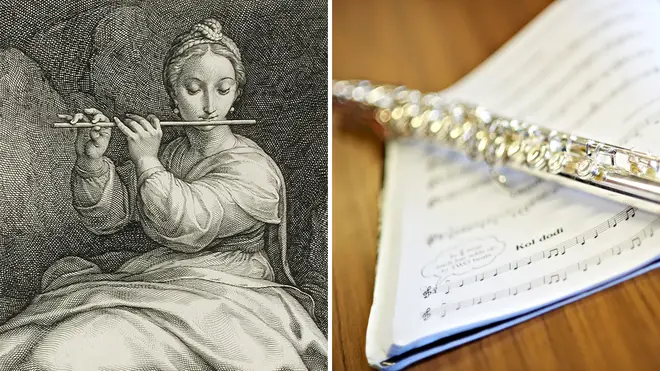
When did flutes start being held sideways, and are there any that you play vertically instead? We dive into the history of classical music’s transverse instrument.
In 2008, at Hohle Fels, a cave in Germany, a 35,000-year-old instrument was discovered.
It was carved from the bone of a griffon vulture, with five finger holes and a length of 8.5 inches (22 cm). It was a flute, and it has claimed a place in history as the oldest known example of a Western iteration of the instrument.
Aside from the human voice, flutes are the earliest musical instruments recorded in human history. While we think of shiny metal (often silver) instruments, flutes were actually historically made of hollowed wood, or of bone, as the example above attests.
Read more: Tiny 12,000-year-old flutes mimic the piercing calls of prehistoric birds

Claire Chase plays five different kinds of flute
The flute is a family of musical instruments in the woodwind group. Unlike woodwind instruments with reeds, a flute is an aerophone or reedless wind instrument that produces its sound from the flow of air across an opening.
It is tubular in shape, and its sound results from the airflow being directed against a sharp edge. The edge ‘splits’ the airstream, and the stream that goes through the flute’s tube vibrates, and those vibrations come out as sound.
Technically speaking, a range of instruments are members of the flute family, including whistles, recorders, and ocarinas, because of the way they are played – they all involve air being blown across an opening.
There have been examples of different kinds of flutes all through human history, and all over the world, including on all inhabited continents of the world: Oceania, Europe, South, Central and North America, and Asia.
Read more: The 10 most relaxing pieces of flute music ever written
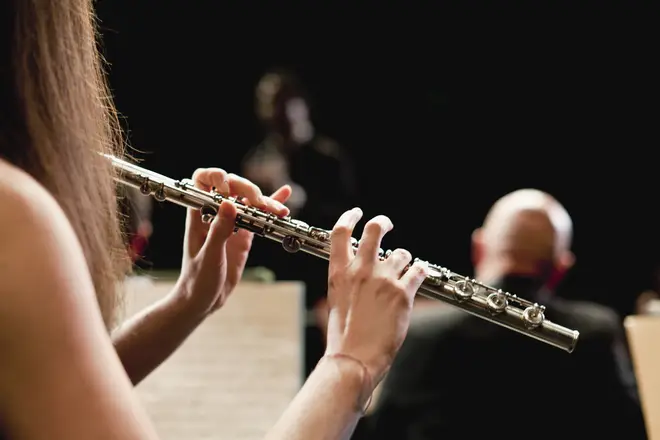
Flutes are held to the side to enable their players to blow an airstream across a mouth hole on the side of the cylindrical tube of the flute.
The reason they became side-blown was to strive for new possibilities in terms of the quality of sound produced and achieving evenness in chromatic scales.
These flutes, known as transverse or cross flutes, were known in ancient Greece, India, China and Japan, and later in a one-keyed version, made of wood, in France.
This one-keyed sideways flute was firmly established in Europe by the late 17th century, and is attributed to the Hotteterre family of instrument makers and musicians based in Paris.
The 17th-century Hotteterre and Hotteterre-inspired flutes were ‘conical’ instruments, and they were split into two separate parts that enabled one section to stray from an even diameter throughout, instead narrowing towards the foot of the instrument.
Read more: Labour leader Sir Keir Starmer plays flute, recorder and piano, and was a Guildhall music scholar
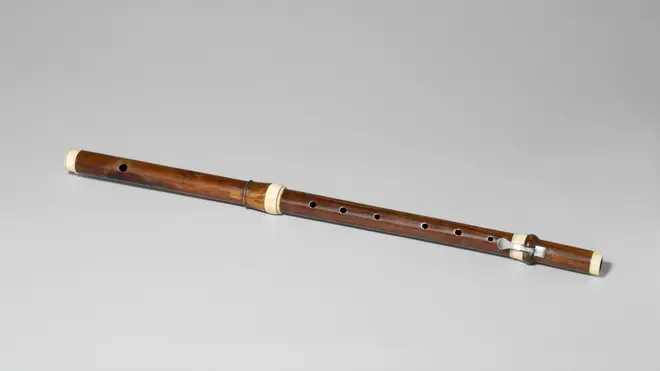
The different shapes of the conical and cylindrical flutes means they produce sounds of different quality due to the physics of sound waves in the instrument.
The cylindrical bore instrument has a thinner sound in its lowest two octaves, but improves in the third, while the conical instrument achieves a fuller, more even tone throughout all octaves.
The conical flute revolutionised the instrument’s ability to produce a full, even tone across all registers.
Read more: What are the keys in music?
Once the flute took on its conical nature, it started to be known as the “flauto traverso”.
“Traverso” is the Italian for “transverse”, which means side-blown.
With its more even sound quality, and makers and performers’ ambitions to make its semitones as even as possible, the side-blown flute started gaining more keys for greater control.
This is where Munich flute player and inventor Theobald Boehm (the name will strike fear into the heart of any flautist reading this who’s reminded of endless studies practise conducted in the company of the 24 Etudes, Op. 37) comes in.
Born in Munich in 1794, Theobald Boehm was a flute player and maker who developed the side-blown transverse flute of his day into an instrument comparable to the modern concert flute we see in orchestras now.
He created a new conical flute in 1832, which replaced the traditional hole layout with a key system devised to honour acoustics above all else. He honed his system of rods, keys and rings, designed to close on top of specifically-spaced tone holes and produce different pitches when pressed by the players’ fingers, and in 1828 established a factory.
The flute had gone into mass production.
He kept refining the instrument, and produced a second model in 1847 that was even more chromatically even and technically versatile. The Boehm flute took Europe by storm, and with factory production behind it, established itself as “the flute.”
When we say “flute” now in Western music, we most commonly mean the Boehm system concert flute.

The modern concert flute is a “treble” flute and has a range starting at middle C (or the B beneath that if you have a special foot joint), and can play around three octaves. Still, some very experienced players can play up to an octave higher than that.
There are also alto and bass flutes, which are larger instruments with larger tubes, which produce a lower sound. Even lower still are the contrabass, subcontrabass and hyperbass flute, which are all so large that they’ve gone full circle and been designed to blow horizontally but overall be played vertically (their head joints twist around in a triangle). The hyperbase twists and turns several times, and even then stands taller than a person.
The flute's smaller cousin, the piccolo, plays an octave higher, making it one of the highest instruments in the orchestra.
Read more: Is this massive bass overtone flute the scariest-sounding instrument ever?
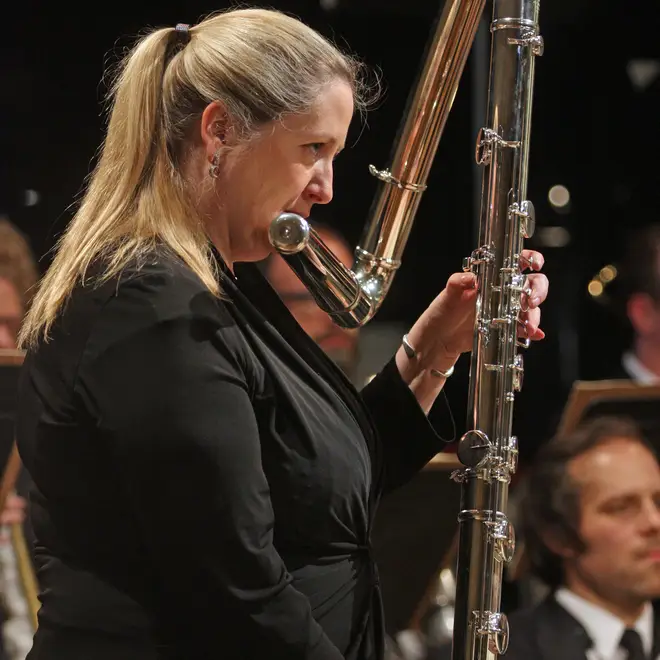
Not all flutes are held to the side, and historically vertical flutes developed in Oceania and Asia, with players blowing the airstream across the top of the cylinder to create the split airstream mentioned above.
Recorders, which are played vertically, are technically flutes, as are panpipes, whistles and ocarinas. All of these top-blown, vertical instruments are aerophone instruments where airflow blown across a surface produces sound.
The shakuhachi is a Japanese end-blown flute, whose end is sealed against the player's chin, and the Chinese xiao is another end-blown flute.
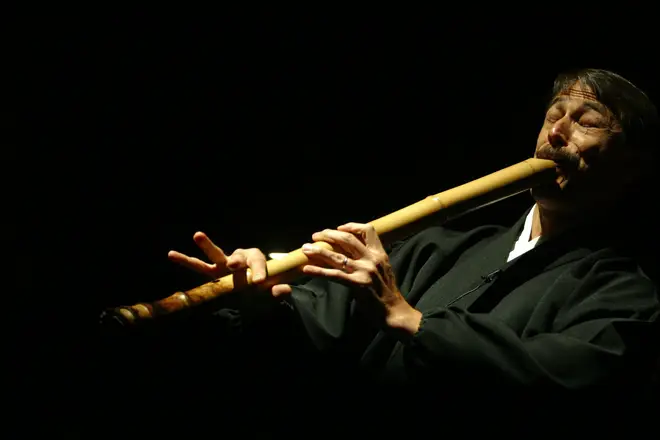
Another Chinese flute is the dizi, is a transverse flute with a thin membrane stretched over a hole in the tube, which produces extra harmonics and a brighter sound.
Nurtured and treasured all over the world for centuries, the flute is an instrument of limitless possibilities and rich variations.